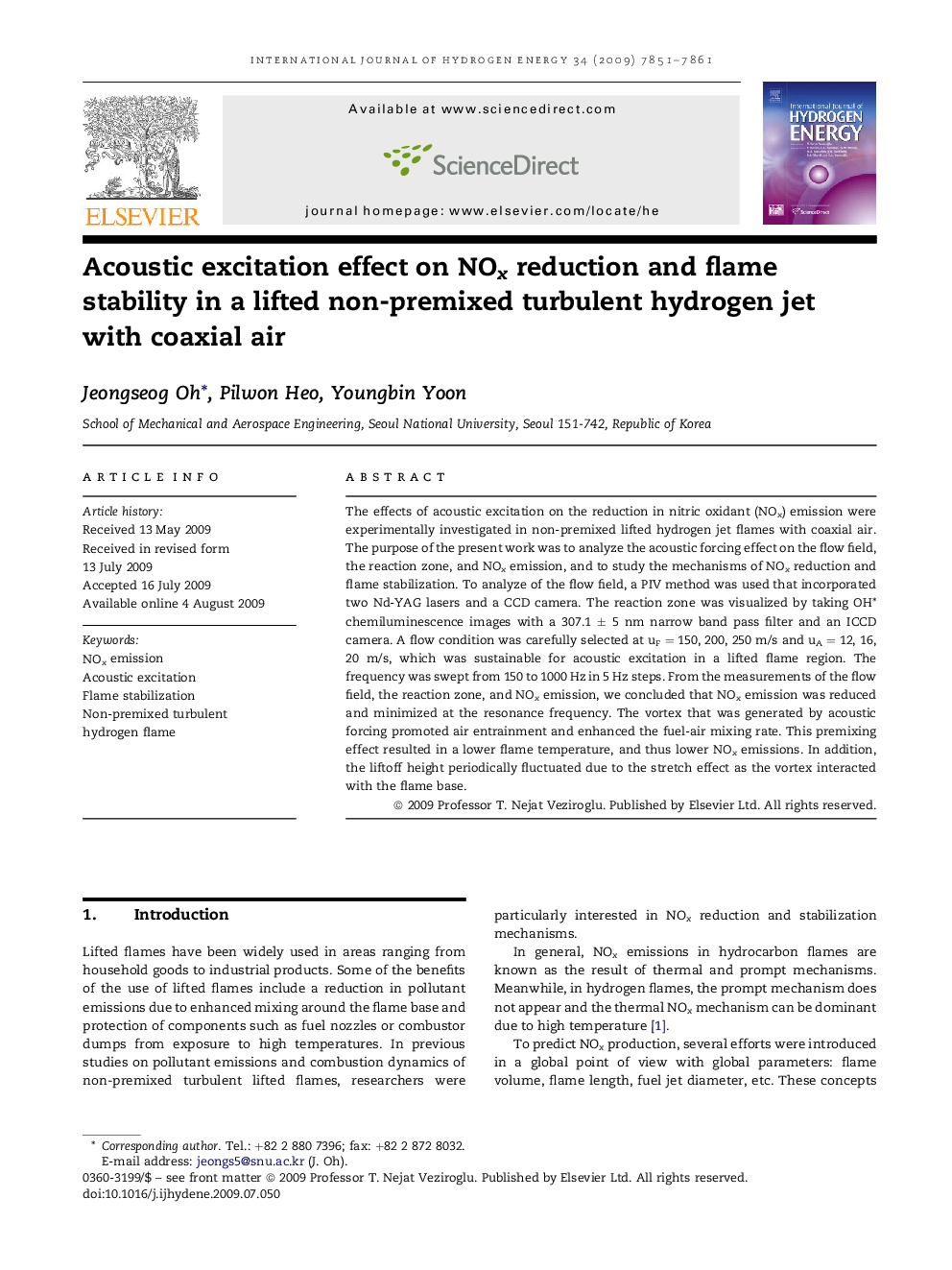| Article ID | Journal | Published Year | Pages | File Type |
|---|---|---|---|---|
| 1277430 | International Journal of Hydrogen Energy | 2009 | 11 Pages |
The effects of acoustic excitation on the reduction in nitric oxidant (NOx) emission were experimentally investigated in non-premixed lifted hydrogen jet flames with coaxial air. The purpose of the present work was to analyze the acoustic forcing effect on the flow field, the reaction zone, and NOx emission, and to study the mechanisms of NOx reduction and flame stabilization. To analyze of the flow field, a PIV method was used that incorporated two Nd-YAG lasers and a CCD camera. The reaction zone was visualized by taking OH* chemiluminescence images with a 307.1 ± 5 nm narrow band pass filter and an ICCD camera. A flow condition was carefully selected at uF = 150, 200, 250 m/s and uA = 12, 16, 20 m/s, which was sustainable for acoustic excitation in a lifted flame region. The frequency was swept from 150 to 1000 Hz in 5 Hz steps. From the measurements of the flow field, the reaction zone, and NOx emission, we concluded that NOx emission was reduced and minimized at the resonance frequency. The vortex that was generated by acoustic forcing promoted air entrainment and enhanced the fuel-air mixing rate. This premixing effect resulted in a lower flame temperature, and thus lower NOx emissions. In addition, the liftoff height periodically fluctuated due to the stretch effect as the vortex interacted with the flame base.
